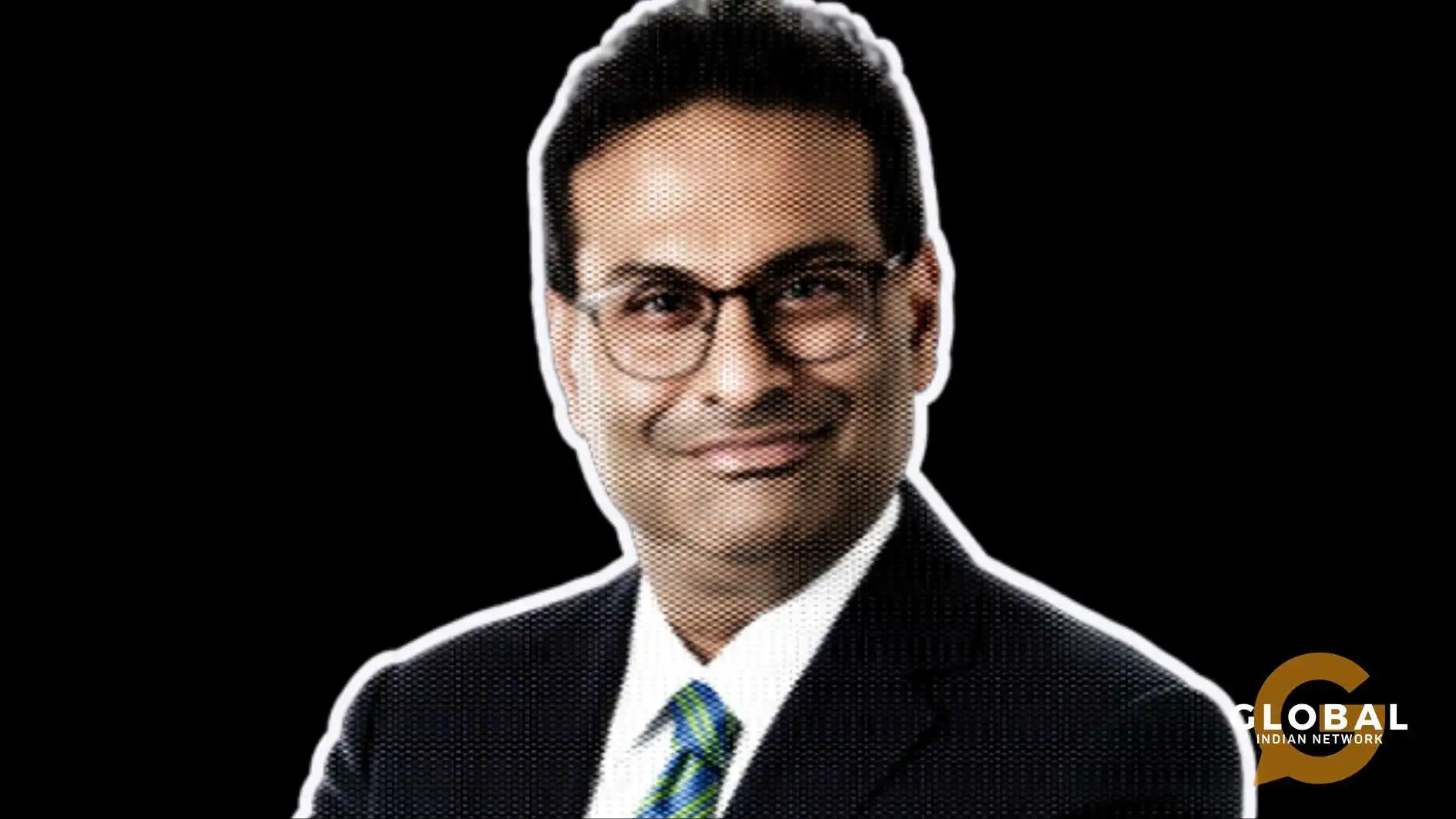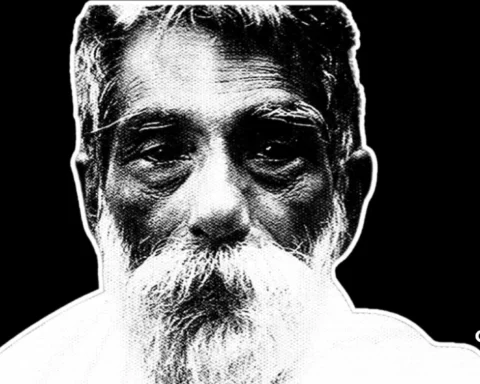The corporate world is a never-ending battlefield, where even the most successful leaders can experience downfall because of market realities and shareholder expectations. Laxman Narasimhan, a famous executive with an impressive global career, who had a significant turnaround plan at major companies, culminating in a highly scrutinised role and, in a short period of time, became the CEO of Starbucks.
His path from short, humble beginnings in India to the road of iconic global brands. His journey offers us a compelling case study in the tremendous pressures and sometimes unforgiving hardships of top-tier leadership. What we learned from his experience is amplified after the shifting dynamics of the COVID-19 pandemic, market, social media, and activist investors played a powerful role.
Table of Contents
Who Is Laxman Narasimhan? A Leader Created In Global Business
Laxman Narasimhan’s birth place is in Pune, India, and he was born on May 15, 1967. His early life built his path, which was defined by academic excellence and a fierce drive.
Laxman Narasimhan’s education includes a Bachelor’s degree in Mechanical Engineering from the College of Engineering, University of Pune. He later pursued his further education in the United States. He has an MA in German and International Studies from The Lauder Institute at the University of Pennsylvania and an MBA in Finance from The Wharton School at the University of Pennsylvania. He also holds the titles of a Palmer Scholar and J.N. Tata Scholar. His extraordinary background and multicultural upbringing prepared him for a career that would expand to other continents and diverse industries.
Before applying for his high-profile appointment at Starbucks, Narasimhan built an excellent reputation as a “turnout agent”. His career started at McKinsey & Company, where he spent 19 years, rising up to become a senior partner and focusing on consumer, retail, and technology practices. He led the team of global consumer and shopper insights practice. After this career path, he moved to PepsiCo, working on significant leadership roles, including becoming the Chief Commercial Officer and then the CEO of PepsiCo Latin America, Europe, and Sub-Saharan Africa (ESSA). His most renowned achievement before Starbucks was his tenure as the CEO of Reckitt Benckiser, which is a British Multinational consumer goods company.
Working at Reckitt Benckiser got him a good reputation. He took the throne during challenging times, establishing a significant reputation that earned him widespread praise and recognition. This impressive and extraordinary track record of consistent ability to grow and gain profit made him an extraordinary candidate for the top jobs at Starbucks.
Laxman Narasimhan’s family life had a significant influence on his drive and personal values. He is married and has two children, and he has a work-life balance. His deep personal life reveals the significant impact of family on his life. The loss of his younger siblings at an early age created a deep sense of obligation in him towards his parents and an urge to pursue excellence. His personal life foundation pushed him towards his ambition and resilience throughout his career.

Laxman Narasimhan: Starbucks Period, High Hopes and Harsh Realities
Narasimhan became the incoming CEO of Starbucks in October 2022, succeeding Howard Schultz and assumed the role of Starbucks CEO in April 2023. His application and appointment were met with considerable hope. He started his unique six-month immersion period working as a barista in Starbucks stores to secretly understand the store operations and culture from the ground level. This approach is a testament to his operational focus, which signalled a leader who is committed to addressing the company’s challenges from the inside. The post-COVID-19 pandemic market, marked by cautious consumer spending, led the company to face serious problems with declining average ticket size as consumers stopped spending on discretionary purchases.
However, this global giant coffee company was facing significant headwinds. Unionisation efforts in the US, fierce competition, geopolitical tensions, and changing consumer habits, which impacted sales in significant markets like China, showed a very complex and volatile environment. Narasimhan’s steps included focusing on improving the in-store experience, addressing employee morale, and streamlining operations. Even though these efforts were put in, Starbucks struggled financially. The company showed declining same-store sales in the US and a slowdown in China, which led to a revised annual sales forecast.
Why Was Laxman Narasimhan Fired? The Scrutiny and the Severance
The increasing pressure that ultimately led to Narasimhan’s abrupt departure. Starbucks cited it as a “mutual agreement”; it became clear that the decision made was purely driven by the company’s financial struggle, its market conditions, growing dissatisfaction among the public, consumer sentiment, consumer environment, dissatisfaction among activist investors, and sales declines.
Starbucks analysts pointed towards the falling sales numbers and operational wrong steps, such as the challenges with mobile order services, which affected the commercial digital capability of the product, leading to long waiting times and customer frustration, as important factors. The emerging weight of these issues, a highly competitive market, and even external factors like boycotts stemming from geopolitical events did too much damage to overcome in a short period of time.
The company faced multiple crises, which also included the ongoing push from the Workers United union, which gained a lot of strength and momentum following the pandemic. The labour pressure mounted with financial underperformance drew the attention of influential activist funds like Elliott Investment Management and Starboard Value, which started to put pressure on the Starbucks Board. Chris O’Cull from the investment bank William Blair did a very critical commentary on the company’s struggle. The reports showing Starbucks stock underperforming and financial struggle, the Russell 3000 Index gave us a clear picture of Narasimhan’s struggle.
The abrupt nature of his exit brought questions about Laxman Narasimhan’s severance pay. The exact terms can be complex and may involve other agreements. The reports indicate that he is to receive a significant compensation package. Initial estimates suggest a severance payout in the range of $10.6 million in salary, benefits, bonuses, and other additional unvested equity. This is through standard agreements for top executives at big global corporations, even in some instances of early departure. Laxman Narasimhan’s net worth before his Starbucks departure can be estimated at around $19 million to $23 million, largely accumulated through his successful and flourishing long career at various multinational companies and stock holdings.
Conclusion
Narasimhan’s story in Starbucks, though a small one under the heaviness of scrutiny, does not fade his extraordinary career and reputation as a capable and extraordinary leader. His journey shows us the rising challenges of leading a global brand in a rapidly evolving market, where outside pressures and internal misalignment can rapidly overshadow even the most well-known, intentioned strategies. While his tenure at Starbucks ended abruptly, his earlier successful career at companies like Reckitt and PepsiCo, where he served as Global Chief Commercial Officer for a period of time, shows us his capabilities as a leader in various sectors, including in Latin America.
The abrupt change of Rachel Ruggeri, the Chief Financial Officer, stepped in as an interim CEO before the Starbucks Board declared a new direction. The stock price was heavily scrutinised by The New York Times, and Fortune Magazine did not respond as they had hoped. Narasimhan’s efforts to increase sales and address the underlying issues, including the ongoing supply chain challenges. This underperformance with shareholder dissatisfaction paved the way for Brian Niccol, former Chipotle Mexican Grill CEO, who had a track record of turning around complex restaurant businesses, suggesting a strategic shift for Starbucks, trying to keep hold of the market pace and customer loyalty.
The Starbucks chapter reminds us that even the most extraordinary and strategic executives face the ruthless struggles of corporate leadership and consumer-facing industries, which is a very demanding and unforgiving landscape where success is not always guaranteed and the path is always unpredictable in the winds of the market.

FAQs
Why was the Starbucks CEO removed?
Starbucks CEO Laxman Narasimhan has stepped down after 17 months in the role. His tenure at the company was tainted by falling sales, union clashes, and activist investors. One analyst said his exit from the top role was “not surprising.”
How much does Laxman Narasimhan make?
Narasimhan, who spent just over a year as the company’s CEO before being replaced by Niccol, earned a total of $21.5 million in compensation in 2024. This included $14.3 million in stock awards and almost $6 million in other compensation.
Why did Starbucks hire Laxman Narasimhan?
Narasimhan was lured to Starbucks in part because of the unique method in which the company opted to employ its new CEO. Schultz did not have an official role with the company in early 2022. But he stepped in that March after his handpicked successor, Kevin Johnson, opted to retire.
When did Laxman Narasimhan become CEO of Starbucks?
Narasimhan joined Starbucks as interim CEO in October 2022 and succeeded Howard Schultz as CEO in April 2023. He was ousted by the board of Starbucks in August 2024.









